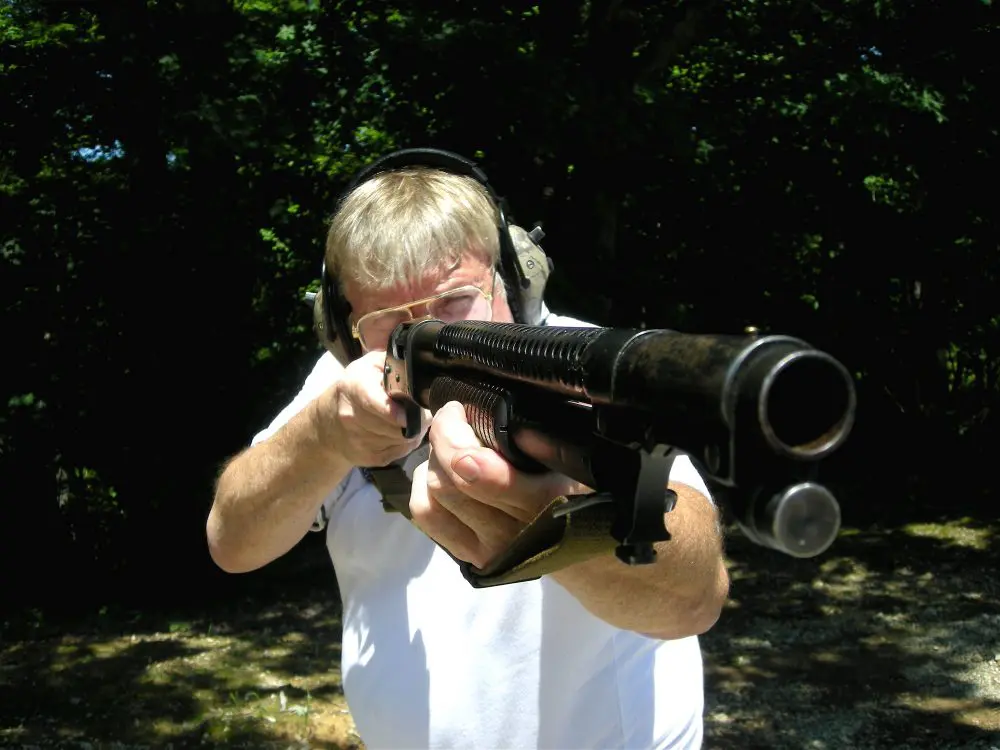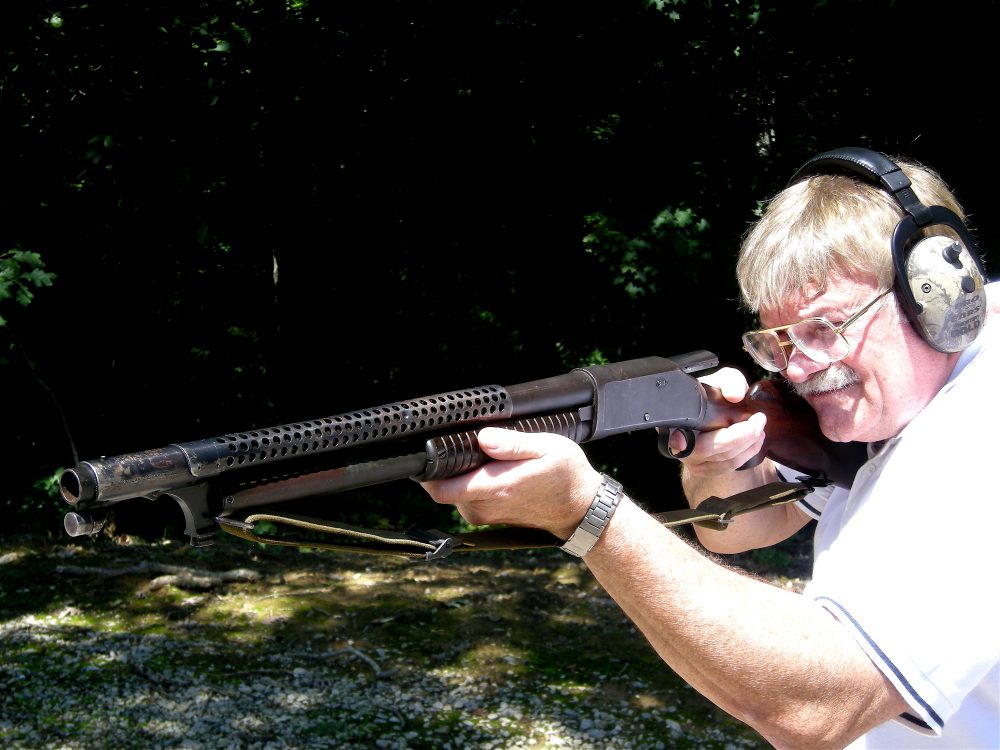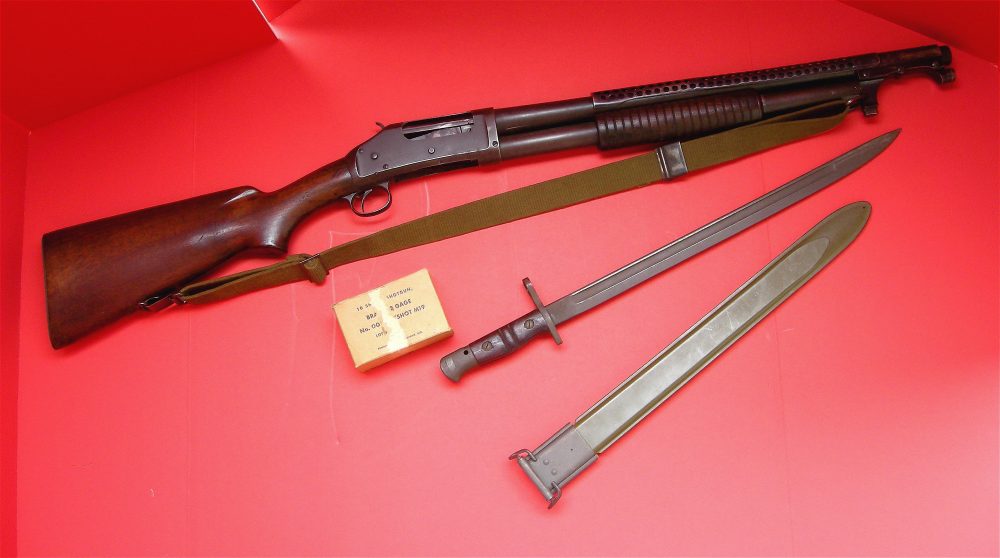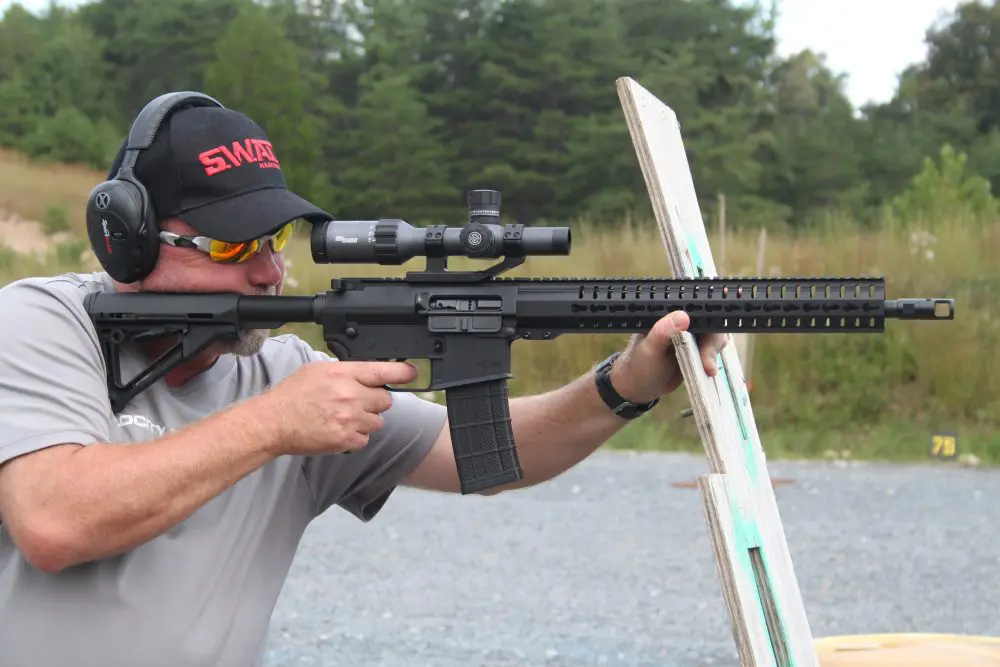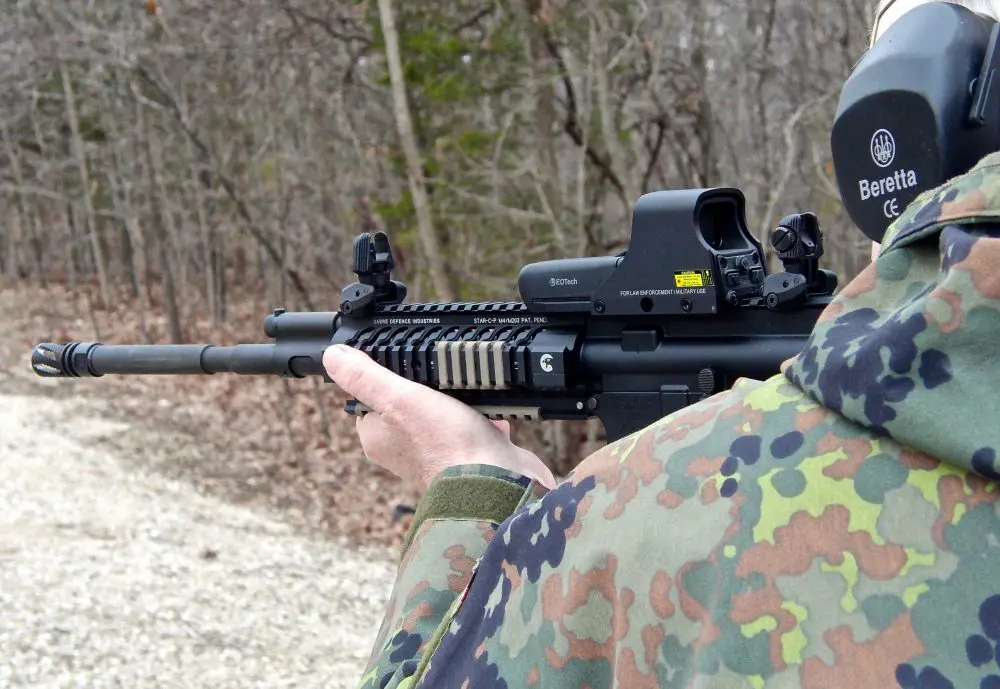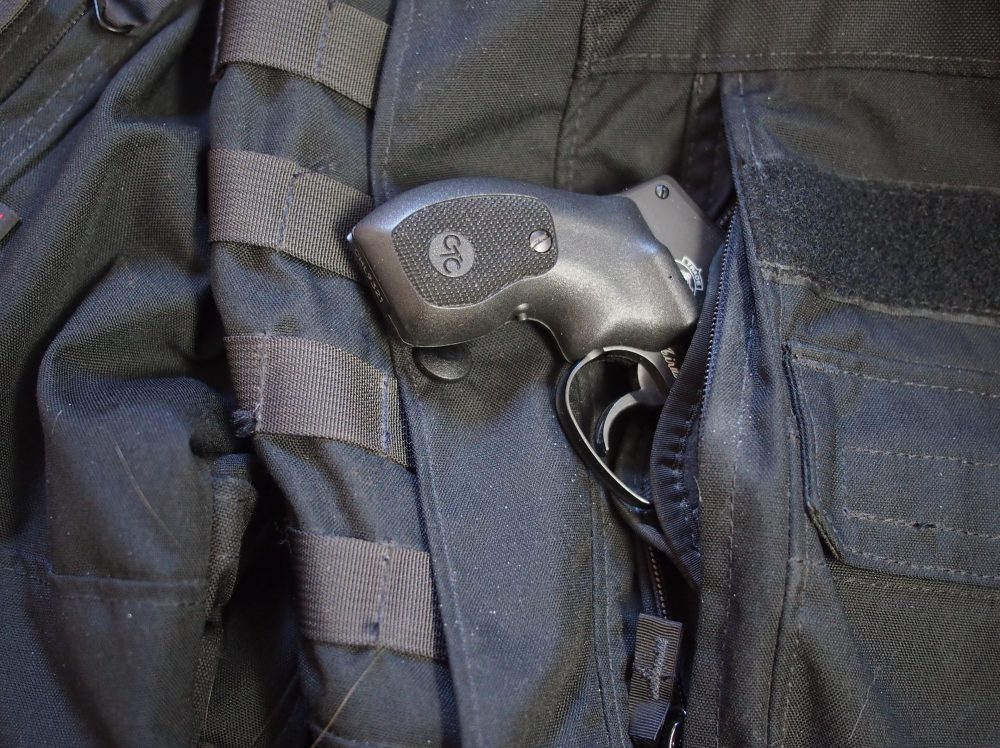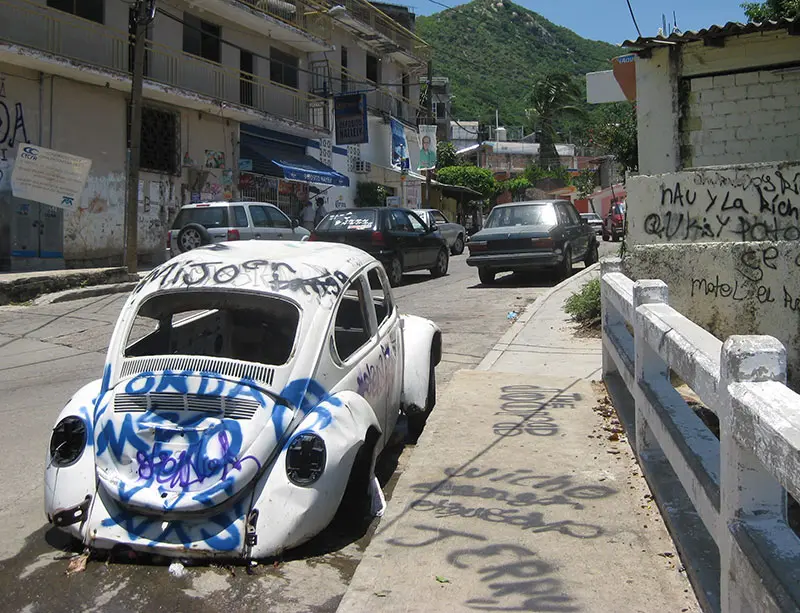I was never one of those shooters who ran out and bought guns because I saw them in movies. Dirty Harry didn’t influence me to buy a Model 29, nor did James Bond films give me an urge for a Walther PPK, though I have owned examples of both. As much as I enjoyed Quigley Down Under, I didn’t buy a Sharps replica. However, from the time I first saw The Wild Bunch and The Professionals, I was fascinated by the Winchester Model 97 trench gun. It just looked so martial and deadly that it fascinated me.
It took me a few years to find one in relatively nice shape, but I finally did. It was a World War I example that had not been refurbished for World War II, hence it was desirable to U.S. military collectors, and I let one of them talk me out of it.
Thompson shoots M97 trench gun with distinctive handguard. Bolt comes out of rear of receiver when slide is operated.
I’ve owned two or three other M97 trench guns since then. As their price has continued to rise, I sold them, but awhile back I bought a very good example of a World War I shotgun that had been refurbished for World War II. I liked the idea that it had served in both of those conflicts (and possibly in Korea), so I added it to my combat shotgun collection—to stay this time!
The Model 97 Winchester had been in service with law enforcement agencies in riot format for some years, but it wasn’t until the United States entered World War I and faced the vicious combat in the trenches that the Army and Marine Corps saw the need for a military shotgun designed for close combat in such confined spaces. As a side note, the Colt and S&W 1917 revolvers came about for similar reasons, as U.S. troops wanted more handguns in the trenches.
Circa World War I, German soldier’s eye view of M97 trench gun.
The Model 97 made a good choice for trench combat because it does not have a trigger disconnect, which allows rounds to be fired quickly by holding back the trigger and just operating the slide action. The Winchester Model 12, which was also used in “trench” format, and the Ithaca Model 37 used by Special Forces and SEALs in Vietnam, among other shotguns, share this feature.
With practice, a shooter can engage multiple targets very quickly with one of these shotguns. I had one really beat-up 97 riot gun, an ex-prison gun, which I carried in my trunk as a car gun for years. I used to shoot out the buckshot loads in it every few months on multiple targets as quickly as I could engage them. I got pretty fast.
M97 trench gun with sling, bayonet, and brass M19 00 buckshot loads.
The Model 97 shotguns acquired for military usage had 20-inch barrels and five-round magazines. They were chambered for 12-gauge, 2 ¾-inch shells. What makes the trench gun so distinctive is the ventilated handguard/bayonet attachment that is fitted to the gun. The handguard has a front sling swivel, and a centering stud is located on the magazine cap of the trench guns to help support the bayonet. Trench guns were designed to take the bayonet used for the 1917 Enfield rifle.
Production of the M97 trench gun was over 19,000 during World War I and just over 25,000 during World War II. World War I figures include a limited number of riot guns that were purchased and not fitted with the handguard.
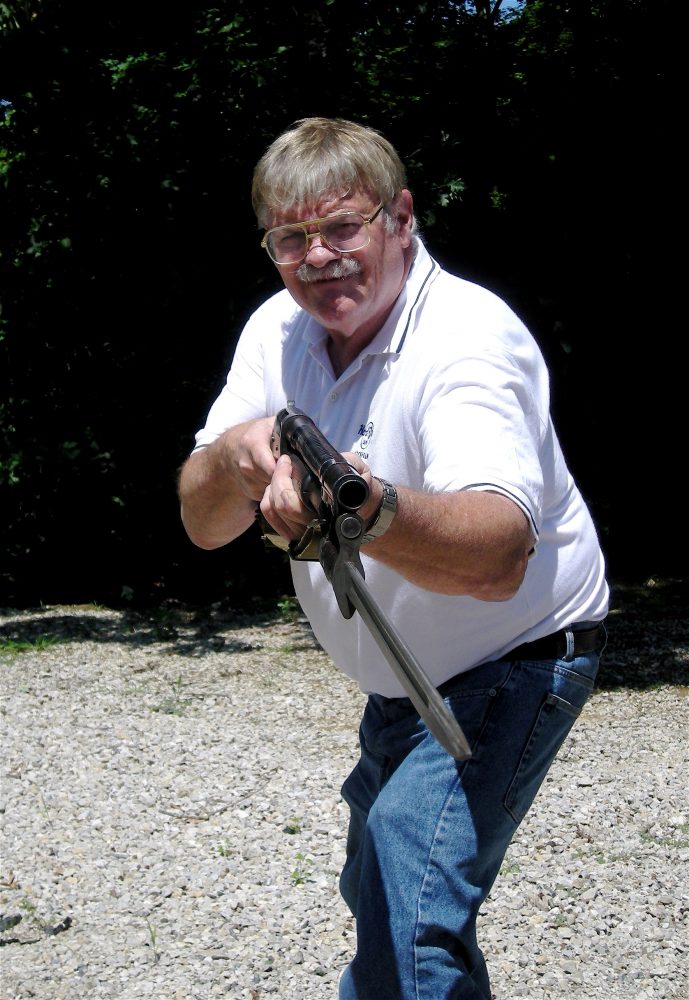
From all reports, U.S. troops loved the M97 trench guns and German troops hated them. In fact, Germany filed protests through Switzerland to the effect that use of shotguns violated the rules of war. Of course, the Germans saw no problem in using the Bergmann MP18 SMG late in the war. It’s understandable, though, why the Germans didn’t like facing the trench gun. In the close quarters of trench warfare, it could fill them with buckshot or stick them with its bayonet. Doughboys liked the trench gun for going “over the top” as well, since it gave them a formidable weapon for clearing enemy trenches.
During World War II, the Marines especially liked the Model 97 and Model 12 trench guns for jungle warfare. Marines had also used their trench guns in Shanghai, Haiti, Nicaragua and various other deployments between the wars. I have also talked with Vietnam-era Marines who still used the Model 12 trench gun in that conflict. Military Police found that an M97 trench gun with bayonet attached was an excellent choice for guarding prisoners during World War II. Trench guns with bayonets attached were also considered excellent for riot duty in Shanghai.
One problem that arose in the dampness of the trenches and later in jungle warfare was the paper-tubed shotgun shells, which would deteriorate and/or expand from moisture, thus rendering the shotgun inoperable. In World War I, Marines made it a point to cycle every shell through their trench guns to check reliability before beginning an assault.
The fix was all-brass shotgun shells loaded with 00 buck that were purchased from Remington and Winchester late in World War I. The problem arose again in the Pacific during World War II and eventually resulted in the USMC adopting the M19 brass shotgun shell. During World War I, the Marines had asked for a brass shell loaded with BB shot to put more projectiles in play within a trench.
I used this column as an excuse to take my M97 trench gun out and fire a few rounds. I have some brass shells, but they are too expensive on the collector market to shoot up, so I used Federal Tactical Loads. I realized that I had never actually attached the bayonet and tried a bayonet drill—thrust, withdraw, buttstroke—you get the idea. The M97 trench gun with bayonet attached seems much quicker and handier for bayonet drill than a Springfield or Enfield rifle. I think that would have been appreciated in the trenches of World War I.
I still watch The Wild Bunch and The Professionals whenever they’re on. I have to admit, too, that the last time I was watching The Professionals I got out my M97 trench gun and gave it a cleaning and oiling.
Unlike Elvis Presley, though, I did not shoot my television set … I didn’t bayonet it either!
